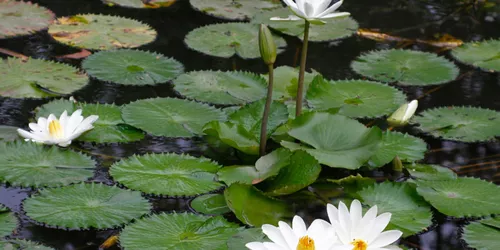Seeing Augsburg's sights with childhood friends
Be it books, theatre or museums, Tim could never get enough of stories and history even when he was a child. Today, he brings his childhood friends Anna and Max on a tour of the cultural and culinary highlights of Augsburg, the town he now calls home.
Augsburg is Bavaria's third-largest city after Munich and Nuremberg. It's also one of the oldest cities in Germany: the Roman provincial capital of Augusta Vindelicum became the seat of medieval bishops, then the frequent site of imperial diets, and ultimately the home of powerful patrician families. Augsburg contains countless reminders of its rich history.
Tim has known Max and Anna since their earliest days at kindergarten. Today, all three of them live in different parts of Bavaria. Tim's new home is Augsburg, which is worth repeated visits and is so easy to reach by train.
His friends got up early on Saturday morning to travel to Augsburg. The first thing on the agenda when they arrive is a good breakfast. Tim knows what's probably the best place in town: Henry's Coffee, with its spectacular setting on the town hall square and unbeatable menu of international coffee varieties. With its modern, urban atmosphere, the café-bar uses top-quality coffee beans from around the world – some of them are real rarities. Patrons can watch the roasting process as it takes place and enjoy the smell of freshly ground coffee. The café also has products for people who prefer tea, and its generous breakfast menu caters to every taste.
With breakfast behind them, the three friends set off into the old town to find something they all know from their childhoods: the Augsburger Puppenkiste puppet theatre. It staged its first performance – Puss in Boots – on 26 February 1948, and since then it has remained a much-loved attraction for young and old alike. The characters used by the theatre are almost legends in Germany: Kasperl, Jim Button and Luke the Locomotive Driver, Urmel the Dinosaur, and the Sams. Tickets for performances are so sought-after that they are often sold out long in advance. The friends decide to buy tickets for their next trip to Augsburg, when they will see something from the cabaret programme in the evening. The theatre has its own museum, located on the first floor of the listed Heilig-Geist-Spital. It presents the famous marionette stars against the backdrop of familiar stage sets, and it hosts a range of temporary exhibitions that complement its permanent collection. For example, an exhibition about how members of the powerful Fugger dynasty lived will run until November 2019.
The three friends want to see how green Augsburg is, so then they set off for the city's botanical gardens, home to exotic plants from far-away places. Tim's favourite spot is the Japanese garden, designed by the famous landscape gardener Yoshikuni Araki. Max reminisces about his journey to East Asia and the vivid colours he saw in gardens there. He impresses his friends with the Japanese terms and characters that he can still remember.
The trio wants to use the weekend to catch up – and also to make some new memories. Some of these come at Escape Game, where they have to work as a team and solve fiendish puzzles as they embark on a world-saving mission as spies, get to the bottom of grisly ghost stories or keep their wits about them in a military bunker. It's the opposite of child's play, but together, they can rise to the toughest challenge – after all, they were a team long ago in the kindergarten playground.
Afterwards, they need a short break to get their strength back. The best place is the idyllic Hofgarten park beside the cathedral. Dating back to the Baroque and Rococo eras, this small park is an island of repose hidden away in the heart of the city. Unsurprisingly, it is extremely popular with the good citizens of Augsburg. Afterwards, the trio pays a short visit to the cathedral – its 950 years of history fascinate architecture student Anna, who is particularly interested in seeing the 15th century stained glass window dedicated to the Virgin Mary. Spotting information about detailed visitor tours of the building, she tells Tim that she's already making plans for her next trip to Augsburg.
The friends finish the day's sightseeing at the Fuggerei, which is just a 10-minute walk from the cathedral. Like a picturesque small town with rows of houses, it was established in the 16th century – making it the only social housing complex in the world to exist for over 500 years. It was originally founded by Jakob Fugger, a member of the famous merchant family. The museum on the site explains the background and history of the Fuggerei from 1521 until today. No visitor should miss the two show flats, complete with original furnishings, that illustrate the differences between how the Fuggerei's inhabitants lived in the 18th century and today. The complex is internationally famous and very popular with tourists. Anyone who wants a break from the sightseers should explore the area around the "town within a town", which contains so many undiscovered corners with a charming medieval atmosphere. With their curious names, these little streets preserve the memory of Augsburg's impressive history and bring a sense of the past back to life in the modern day and age.

Fuggerei Augsburg: The oldest social housing estate in the world
The Fuggerei in Augsburg is a unique excursion destination and one of the most fascinating sights in Bavaria. For 500 years, this historic social housing estate has provided people with affordable living space, making it the oldest still inhabited social housing estate in the world.Augsburg Hbf



